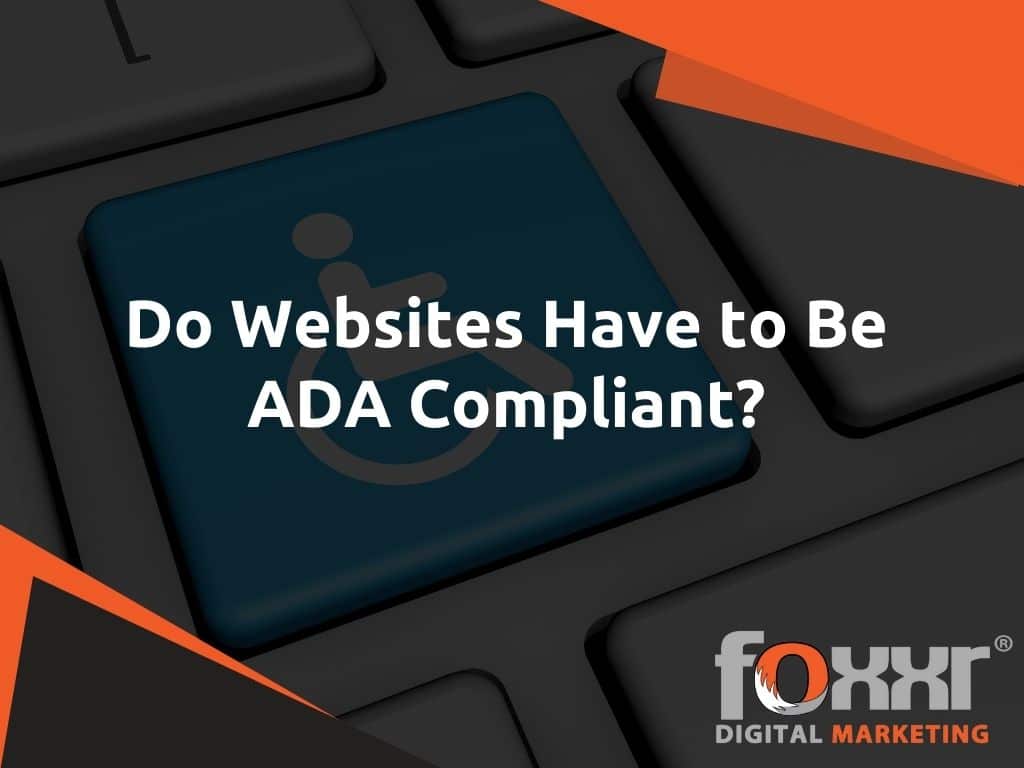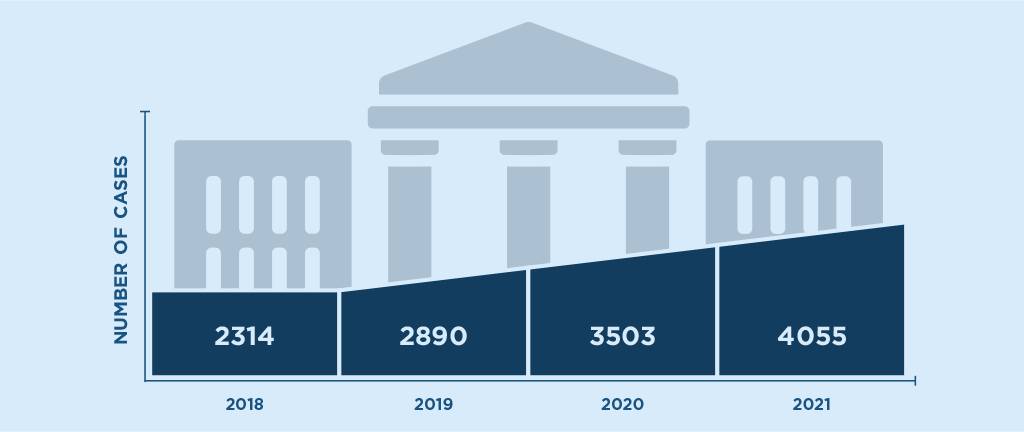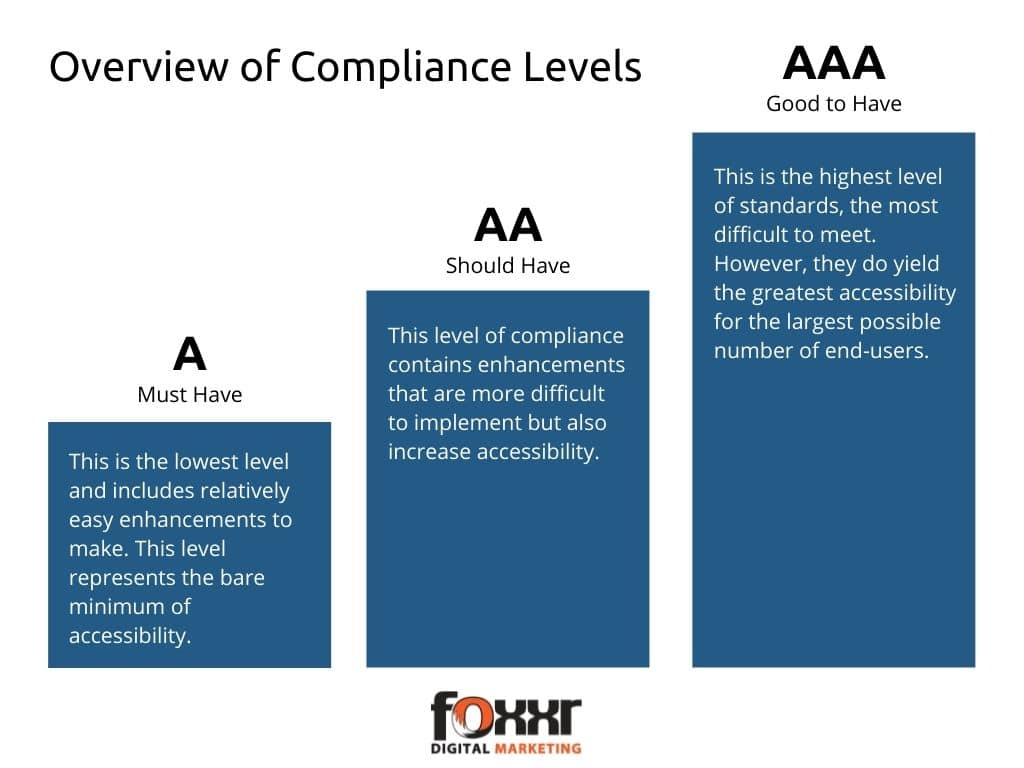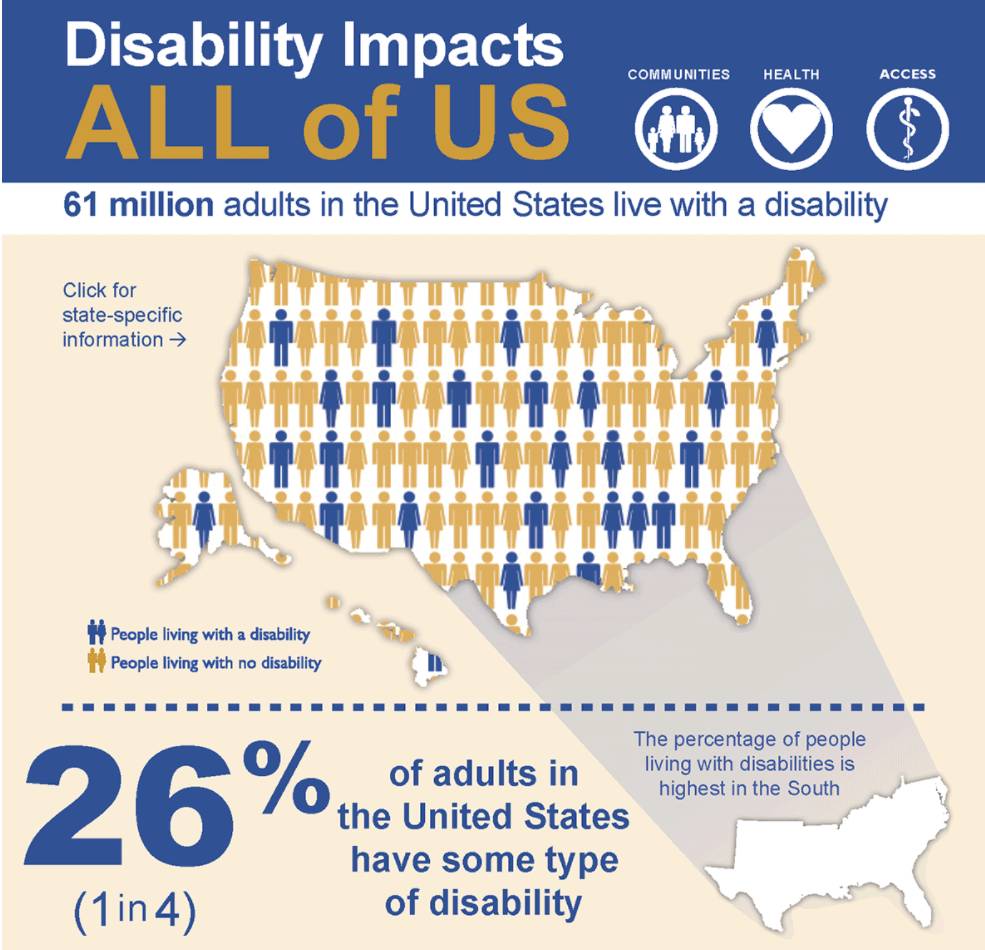Do Websites Have to Be ADA Compliant?
Share this Article

We all know the Americans with Disabilities Act (ADA) has changed the way we build and run in-person stores – but what about online businesses?
ADA standards require that certain kinds of businesses accommodate people with disabilities, including deafness and blindness. Similarly, e-commerce websites need to provide opportunities for all kinds of visitors with voice navigation, alternative reading options, and other assistive technologies.
So, the answer to this blog post’s question is yes, your website should be accessible. Although some kinds of websites are held to higher accessibility requirements than others, all business websites need to make some accommodations to be friendly to all users.
If your website is commercial in any respect, the Department of Justice has deemed ADA compliance mandatory. Let’s take a look at what that means, how you can ensure your compliance, and more.
Understanding ADA Compliance for Websites

The ADA is a civil rights law that prohibits discrimination based on a person’s disability. In physical business settings, this could mean adding ramps for wheelchair users or braille translations for blind shoppers.
ADA regulations are obviously a little different for digital stores, but they still aim to prevent discrimination against online shoppers with disabilities.
It’s estimated that more than half of digital users with disabilities use assistive technology to browse online stores, such as:
- Screen readers
- Magnifiers
- Speech-to-text software
- Braille displays
Therefore, ADA expectations for websites include accessibility options for those using assistive devices. But what exactly does an ADA-compliant website look like?
Well, there’s not really a black and white answer. ADA regulations aren’t super clear in regards to online stores. Still, there are certain expectations that e-commerce websites are expected to meet. We’ll touch on those in a bit, but first, let’s talk about the websites that are legally obligated to ensure accessibility.
Which Websites Are Legally Required to Comply?
Business websites are considered “places of public accommodation” in the eyes of the American court system. In other words, if your website is a store or service provider, you are legally required to comply with accessibility and ADA regulations.
The following kinds of online businesses all fall under ADA requirements:
- Inns, motels, hotels, and other hospitality businesses
- Restaurants and bars
- Entertainment centers (movie theaters, concert halls, museums, etc.)
- Places of public gathering (auditoriums, lecture halls, etc.)
- Grocery and convenience stores
- Recreational facilities (zoos, amusement parks, etc.)
- Healthcare centers
- Gyms, spas, and exercise centers
- Schools and educational centers
- Public transportation services
- Social service establishments
This list is just a brief overview of the vast range of websites that must comply with ADA guidelines. The bottom line is that if your website is for a business with goods or services, you need to hop on the accessibility bandwagon.
ADA Website Lawsuits

Image source: usablenet. Com
If your business website is deemed inaccessible to certain people with disabilities, it could be deemed as discriminatory – and that has financial and legal ramifications. A user who feels discriminated against based on their disability has the right to sue your business for its non-ADA-compliant website.
Granted, interpretation of ADA law in the digital sphere does vary from state to state. Still, suits have been filed in each one of the United States. In fact, digital accessibility lawsuits increased by more than 20% in 2021 alone. ADA-based cases against digital stores reached a rate of more than 10 per day – a 15% increase from 2020.
What Happens If Your Business Is Sued for Non-Compliance?
If your business is sued for non-compliance with ADA regulations, you could face a pretty hefty settlement. Every lawsuit can pretty easily escalate to a five-figure pay-out for the complainant, if not more – and that’s probably money your business doesn’t have to throw around.
However, the consequences of a non-compliance lawsuit don’t stop at the settlement amount. You’ll also need to pay your own defense attorney thousands, then face the expenses of auditing and remediating your website, which can easily cost up to $20,000.
The only way out of paying an expensive settlement is to win the case by proving your website has met the subjective terms of “reasonable accessibility.” Unfortunately, that’s a pretty vague term, so unless you can provide evidence that your team has made a good-faith effort to achieve ADA compliance, you’ll be looking at hefty financial penalties.
So, let’s talk about how you can actually make these good-faith efforts to avoid nasty lawsuits and welcome visitors of all kinds.
How to Make Sure Your Website Is ADA Compliant
Unfortunately, there’s no official set of guidelines for website ADA compliance, which makes digital accessibility a little trickier.
So, how do you build an ADA-compliant website if there are no standards? This is where Web Content Accessibility Guidelines (WCAG) come into play.
WCAG has a set of detailed recommendations that are graded on the following compliance levels.

Level A
The first level of accessibility is the lowest and includes relatively easy enhancements to make. This represents what we call “the bare minimum.” We can always do better than this, but it’s a good place for us to start!
Level AA
This is the more advanced level. It contains enhancements that are often difficult to implement but also increase accessibility.
Level AAA
This highest level of standards is the most challenging to meet. However, they do yield the greatest accessibility for the largest possible number of end-users.
About the Web Content Accessibility Guidelines
The ADA has a bit of a fuzzy relationship with the WCAGs. It considers them to be “voluntary,” but they are still the best map to creating a website that makes accommodations for people with disabilities. In fact, WCAG 2.0 AA standards are mandatory under some other U.S.laws, like the Rehabilitation Act of 1973 and the Air Carrier Access Act of 1986.
Generally, ADA precedence has revealed that following WCAG will confirm that your site is accessible (and safe from ADA-related lawsuits).
To learn more about WCAG guidelines, visit the official website.
Following WCAG 2.1 guidelines ensures your website is:
- Easy to Understand: When you follow WCAG guidelines, your content will be presented in a clear, perceivable manner. This will likely include the use of audio alternatives and assistive technologies that help sight-impaired individuals comprehend your website.
- Simple to Navigate: Users of all kinds must be able to operate your website and find what they need. To meet updated Web Content Accessibility Guidelines, you’ll need to offer keyboard accessibilities and other accommodations that allow any visitor to search and access your content.
- Compatible with Assistive Technologies: Your website’s content will need to be interpreted by many different devices and platforms. When you follow WCAG protocols, you make certain your website is compatible with the top devices.
If you follow Web Content Accessibility Guidelines to at least level AA, ADA compliance issues shouldn’t plague your company. However, that’s not the only benefit of becoming more accessible.
Benefits of Having an ADA-Compliant Website
When you focus on making your website more accessible, you’re not just opening the door to people with disabilities. Here are four other benefits you’ll experience when your site is ADA-compliant.
1. Bigger Target Audience

Image source: cdc. Gov
According to the CDC, up to 26% of adults in the United States have some kind of disability.
- About 13% of these individuals have mobile disabilities
- Almost 6% have hearing disabilities
- Another near 5% have vision-related disabilities.
If your website doesn’t meet the necessary accessibility guidelines, you’re potentially eliminating a whopping quarter of the U.S. population from your target audience. If your business operates globally, that’s an even more dramatic difference.
By equipping your site with accessibility features and making small changes for clarity, you can expand your market and target a much wider range of customers.
2. Better Public Reputation
Nowadays, people care about the businesses they choose to support. We’ve seen a big shift toward shopping with companies that have clear morals and initiatives to help others.
When you make your website friendly to people dealing with disabilities, you demonstrate that you will go out of your way to meet customer needs. It’s a reflection of your dedication to customer service, but also a bolster to your public image and social reputation.
3. Improved SEO
Search engines (specifically Google) pay close attention to what makes websites great for human interactions. If people with disabilities bounce from your website because it isn’t ADA-compliant, you can bet that search engines take note of that. As a result, your website could rank lower in SERPs.
We can’t say exactly how improving your site’s accessibility translates to SEO results, but Google does seem to be prioritizing many tactics related to web content accessibility. For example, we already know that these accessibility elements matter to the search engine:
- Audio and video transcripts
- Image alt text
- Link anchor text
- Metadata
- Heading tag structure
Also – when you make your site friendly to devices like screen readers, you’re also making them friendlier to search engine web crawlers. If screen readers can quickly understand your website’s content, then so can these crawlers, and that positively affects your website’s SEO.
4. Upgraded UX
Lastly, promoting accessibility on your website results in a better user experience all around. Clearer text, easy navigation, and neatly mapped-out pages make things better for every visitor, not just those with disabilities.
A website with a great user experience means more leads and conversions for your business. On the flip side, a poor user experience can send up to 89% of consumers to shop with a competitor. So, it pays significantly to go above and beyond when improving your site’s overall UX.
Quick Ways to Make Your Website More Accessible
There are many things you can do to make your website ADA-compliant and accessible – too many to list completely in this blog post. However, we will share some of the most effective ways to quickly and easily make your website friendly to all visitors.
- Create a more organized layout. Menus, links, and buttons should be clearly delineated from one another. This makes it much easier for users with sight difficulties to navigate through your website content. Search engines love clean layouts, too.
- Give your links descriptive names. For instance, using link text like “click here” doesn’t tell sight-readers what the link is really about. It’s much better to use descriptive phrases like “visit our about us page.”
- Use color purposefully. Bright colors can be a great tool for distinguishing blocks of content and creating visual separations. Just be careful: about 8% of males and 0.4% of females are red-green colorblind, so if you use those colors too much, it could be difficult for them to view your pages.
- Make alt tags for all images, videos, and audio files. These allow users with disabilities (and web crawlers) to read/hear alternative descriptions of content. For example, if a visitor with a sight impairment visits your website, their assistive technology can interpret the alt tag to tell them what an image shows or says.
- Write transcripts for videos and audio files. Text transcripts help hearing-impaired users understand your videos and audio messages. Furthermore, they give search engines a better idea of what the media is about.
- Identify the site’s language in code. When visitors with disabilities use assistive technology to shop your site, their reader devices need to know what language the website should be read in. Distinguish this upfront in your header code.
Audit Your Site for ADA Compliance

Generally, the best way to ensure your site is accessible is to schedule a professional website audit. You can hire web designers and developers to take a hard look at your site, then correct any areas that are not ADA-compliant.
Your team is already busy with a million things. They might not have the experience or time to spend on accessibility improvements, but an external auditor does.
Contact the Foxxr Web Designers Today
At Foxxr Digital Marketing, we don’t just help with your advertising needs. We also have a team of web design experts that will scan your website for barriers to accessibility and provide expert recommendations for ADA compliance.
Even after we perform our initial audit of your website, we’ll stick around to continuously watch for new accessibility concerns and make recommendations as the Web Content Accessibility Guidelines change.
Maintaining an ADA-compliant website is a great way to protect your business from lawsuits, help users enjoy your website, and convert visitors into customers. If you haven’t already started prioritizing accessibility on your site, you could be missing out on a wealth of opportunities.
If you have questions about web design, ADA regulations, accessibility guidelines, or anything else, contact our team today. You can call 727-379-2077 directly or set up a free phone consultation online.
